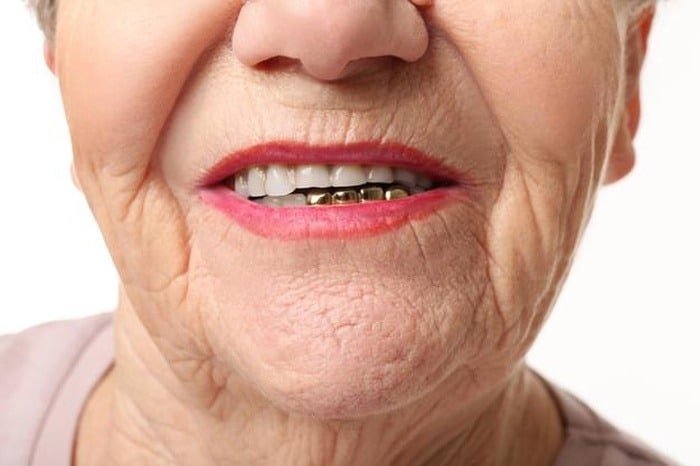All AboutDental Materialsand Dental Fillers
Dental fillings are used to treat tooth damage and decay. They are usually used to repair cracks and breaks in teeth, but have you ever thought about what materials are used for fillings? In this section, we will discuss oral health and dental care.SelMagzWe will explain it here.
These days, there are various materials available for filling teeth. Teeth can be filled with gold, ceramic materials, silver, or amalgam made of mercury and silver.zincYou can also use a material made from glass components called glass ionomer, which is similar to composite. The location and extent of decay, treatment costs, and the dentist’s recommendation determine which option is best for you.

Filling TeethWith Gold
The advantages and disadvantages of these dental filling materials include:
Advantages:
- These materials have a long lifespan of about 10 to 15 years and do not deteriorate.
- High strength that can withstand strong chewing forces.
- Aesthetic enhancement for teeth.
Disadvantages:
- High cost.
- Requires more visits to the dentist, as at least two sessions of work are needed, which may take longer for many.
- Galvanic shock occurs when gold material is placed alongside amalgam silver with a short time gap, causing severe pain known as galvanic shock.
- The interaction between silver and gold creates electric currents, which happen in rare cases.
- The dislike of gold color by many patients.

Amalgam Silver
The advantages and disadvantages of this dental filling material include:
Advantages:
- Long lifespan of 10 to 15 years.
- High strength against chewing forces.
- Cost-effective compared to composites.
Disadvantages:
- Can damage the structure of most teeth, as healthy parts may be removed to place this material inside.
- Color fades over time, turning gray or brown.
- Potential for cracking or breaking due to consuming very hot or very cold foods.
- Allergic reactions, as a small percentage of people, about 11%, have sensitivities to the mercury present in this material.

Aesthetic Composites
The advantages and disadvantages of this dental filling material include:
Advantages:
- Attractive appearance, as these materials match the color of teeth, making them less noticeable.
- Compatible with tooth structure; they can easily adapt to the shape of a tooth.
- Versatility, as mentioned, composites can be easily shaped for broken, chipped, or otherwise damaged teeth.
- Minimally invasive, as placing a composite does not require removing healthy parts of the tooth.
Disadvantages:
- Short lifespan with low resistance to chewing forces.
- Time-consuming, as the process may take longer.
- Frequent visits to the dentist may be required.
- Can chip, depending on the position and type of composite used.
- Costs twice as much as amalgam fillings.

Other Dental Filling Materials
Besides what you have read, there are a few more materials used as dental fillers, including:
Ceramic:
These filling materials are often made from ceramic and last over 15 years, with costs similar to that of gold.
Glass Ionomer:
Made from acrylic, it is used for fillings below the gum line or for very young children and releases fluoride to protect against future decay. This material is weaker than composite and more prone to breaking. It typically lasts about 5 years, with lower costs compared to composites, although newer types have longer lifespans and fit better in teeth.

Important Note
Restored teeth do not have the same resistance as before and require more care. Maintaining oral hygiene and following the dentist’s instructions can reduce the risk of failure. Not adhering to hygiene standards can lead to recurrence of decay in remaining dental tissue. After a tooth is filled, be careful as hard objects can damage the filling during eating.







